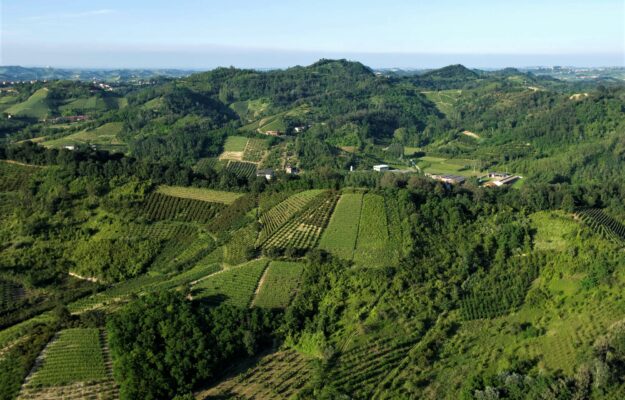A territory rich in great wines, culture, landscapes and tradition, where even a good glass to be tasted in a unique atmosphere or in a historic winery is reason to travel in search of an experience to remember. We are in the lands of Langa and Roero, Italy’s leading district in terms of value, home of Barolo, Barbaresco and the other important declinations of Nebbiolo, with its marvelous hills, culture of work and a charm also immortalized by some of the outstanding figures of Italian culture such as Cesare Pavese and Giuseppe Fenoglio.
It is not surprising, therefore, that the Langa and Roero have enjoyed a real boom in tourism in recent years, with a triple-digit increase in less than two decades and a progression that has not stopped since, both in attendance and in days spent there. Merit not only to wine, but also to successful events such as the 2006 Winter Olympics in Turin, or the inclusion in 2014 of the Langhe-Roero and Monferrato wine-growing landscapes on the UNESCO World Heritage list, not forgetting the other jewel, along with wine, the truffle, to which is dedicated the “International Fair of the White Truffle of Alba”, in the capital of the Langhe, an event that is approaching its one-century anniversary and has become global in scope from a territorial one, and for years has been synergistic with the bubbles of Alta Langa.
A trend that was analyzed at “Changes”, a moment of debate and discussion in the previews of Langhe and Roero wine productions, promoted by the Barolo Barbaresco Alba Langhe Dogliani Protection Consortium. Bruno Bertero, president of Atl Langhe, Monferrato and Roero, framed the contextual factors and trends in the development of the Langhe “brand” also in terms of tourism: the numbers speak for themselves if we consider how, in 2022, the total presences were 845,541, compared to 237,929 in 2004 (+255.34%) and 544,630 in 2014 (+52.44%); the average stay is also on the rise, rising from 2.2 days in 2004, to 2.62 in 2014 to 2.71 in 2022. A territory that has been "discovered" first and foremost by Italians who have risen from 107,000 presences in 2004 to over 408,000 in 2022, maintaining the “leadership” among the nationalities of visitors ahead of Switzerland & Liechtenstein (from 47,217 presences in 2004 to 110,730 in 2022); Germany (from 44,694 to 82,711) and the U.S., which in eighteen years (200-2022) has approximately quintupled its presences, which have reached 48,735. If in 2004 the longest stays came from Germany (2.80 days), now there is the Netherlands with 3.43 days, ahead of Belgium (3.39), Germany (3.30) and Denmark (3.29).
In the 96 municipalities of the area, the number of establishments have gone from 404 to 895 (774 in 2014), the number of beds from 6,150 in 2004 to 11,557 in 2014 to 13,155 in 2022, always considering the 2004-2022 time frame. Numbers that are certainly important but that also need to be “handled with care” if we look at them from another perspective, such as that of environmental sustainability, a topic that has always been discussed, and a real challenge for many valuable terroirs that want to preserve the beautiful and pure landscapes and traditions without running the risk of distorting themselves to accommodate large numbers.
It was also mentioned that 2023 went well in terms of attendance, but also that tourism, however, is concentrated at certain times of the year in addition to the great growth of private rented homes. All this in an area where employment is in full health, but the average age is advancing, with the “sirens” of large investors holding sway and giving pause for thought, a topic, this, developed at “Changes”, in the conference “Langhe (not) for sale, the identity and value of the community”.
Copyright © 2000/2025
Contatti: info@winenews.it
Seguici anche su Twitter: @WineNewsIt
Seguici anche su Facebook: @winenewsit
Questo articolo è tratto dall'archivio di WineNews - Tutti i diritti riservati - Copyright © 2000/2025









































































































































































































